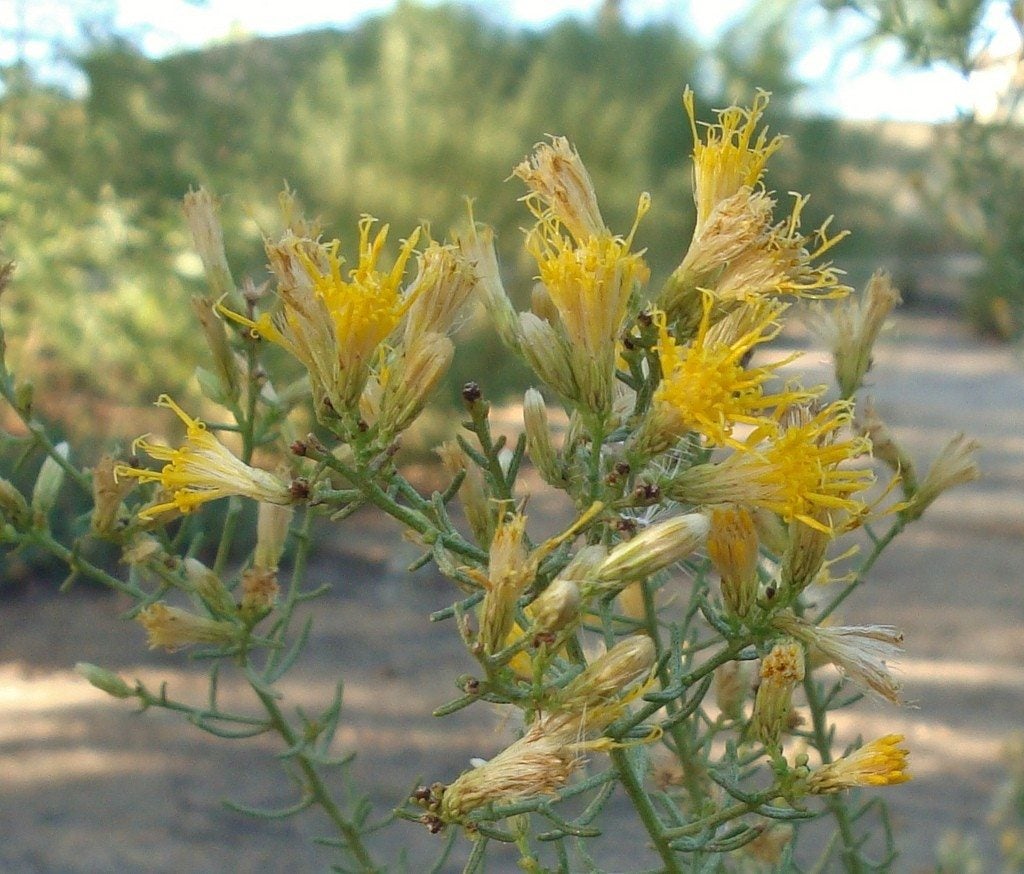Turpentine Bush Information: Tips For Growing A Turpentine Bush


If you want to extend the flowering season in your garden, try planting a turpentine bush (Ericameria laricifolia). It blooms in dense clusters of tiny yellow flowers that last well into fall. Also called larchleaf golden weed, this little shrub is perfect for wildlife gardens where rabbits can browse on its foliage while birds and butterflies enjoy the seeds and nectar.
What is a Turpentine Bush?
Turpentine bush gets its name from the fragrance of its evergreen leaves. When lightly rubbed, the foliage gives off a lemony scent, but when crushed they become a gummy mess that smells like turpentine. The short, leathery, olive leaves are clustered toward the tips of the stems and turn a golden color in fall. The height is usually between 1 and 3 feet (31-91 cm.), but it can reach 6 feet (2 m.).
Turpentine Bush Information
So what is turpentine bush used for in the landscape? Turpentine bush is a great xeriscape plant that performs well as a knee-high groundcover or low hedge. It also works well as a foundation plant and takes the heat from reflected sunlight without complaint. Use it in rock gardens where hot, dry soil is the norm too. Desert wildlife appreciate the turpentine shrub as a source of food and shelter. In the garden it attracts pollinating insects. You'll find no end of uses for this shrub where heat and drought are an issue.
Growing a Turpentine Bush
Turpentine shrub care is easy because it rarely needs water and never needs fertilizer. It grows best in poor, dry soils that are low in organic matter, including sandy soil and those containing limestone. Growing turpentine bush in moist situations may encourage it to grow out of control, so water only during extended dry spells. If you want to use mulch, choose an inorganic material such as pebbles. This sturdy little shrub is native to mountainous and desert regions of the southwestern U.S. where it is hardy as far north as USDA plant hardiness zone 7. A rampant re-seeder, you may find turpentine bush coming up in unexpected places in the garden. After periods of rain, it may grow out of control, but it tolerates severe pruning to bring it back to size.
Gardening tips, videos, info and more delivered right to your inbox!
Sign up for the Gardening Know How newsletter today and receive a free copy of our e-book "How to Grow Delicious Tomatoes".

Jackie Carroll has written over 500 articles for Gardening Know How on a wide range of topics.
-
 Looking For Plants To Give You The Soft And Fuzzies? Try These 5 Fuzzy Leaf Plant Options
Looking For Plants To Give You The Soft And Fuzzies? Try These 5 Fuzzy Leaf Plant OptionsLovers of texture, drama, silver foliage and tactile plants will adore these special sensory garden additions. These fuzzy leaf plant options will leave you all aglow
By Susan Albert
-
 Get Ready For A Summer Of Hummers! Grow These Full Sun Hummingbird Plants and Flowers
Get Ready For A Summer Of Hummers! Grow These Full Sun Hummingbird Plants and FlowersIf you’re lucky enough to enjoy a sunny backyard, make sure you are maxing out on your pollinator opportunities and grow these full sun hummingbird plants and flowers
By Tonya Barnett